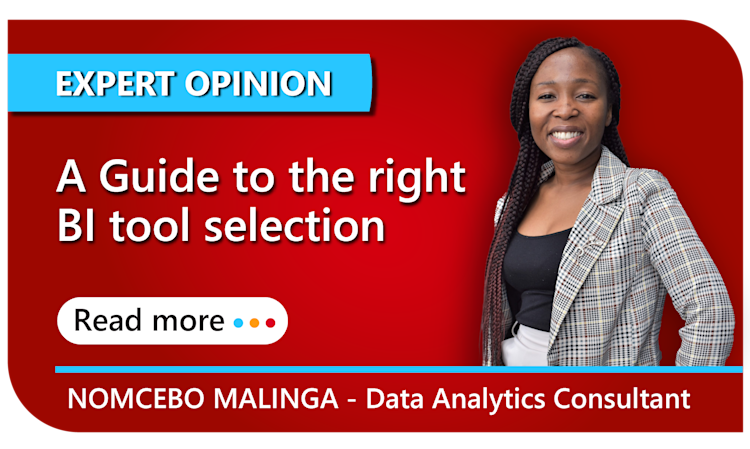In a world increasingly driven by data, organisations across all industries are navigating the complex decision of selecting a Business Intelligence (BI) tool that aligns with their modern data architecture. With data saved across different cloud platforms, databases, and on-premises systems, businesses are challenged not only to gain access to this data but to change it into actionable insights that can guide strategic decision-making.
The right BI tool can connect the gap between raw data and informed action, allowing both technical and non-technical users to visualise, explore, and interact with data in ways that empower fast, effective responses to market demands. Yet, with a range of options available—each offering distinct features, strengths, and integrations—it’s key to understand what makes a BI tool exceptionally compatible with an organisation’s unique data landscape.
From self-service analytics and advanced visualisation capabilities to seamless data integration and governance, selecting the right BI tool can be transformative, enabling every department to leverage data and drive value within a cohesive framework. Organisations across South Africa are investing in modern data architectures that enable scalable, secure, and real-time insights to inform business strategy. However, choosing the right Business Intelligence (BI) tool to integrate with these modern architectures is crucial for maximising data value and ensuring that insights are both actionable and accessible across all levels of the organisation.
As organisations move towards cloud-native architectures, advanced analytics, and data democratisation, they must select BI tools that are adaptable, user-friendly, and robust in data integration. An ideal BI tool should integrate smoothly with your databases, cloud storage, data lakes, and other platforms while providing advanced analytics and visualisation that encourage exploration and insight generation. It should foster a culture of data literacy across departments and ensure insights reach decision-makers when they matter most.
Key Considerations in Selecting a BI Tool
Choosing the right Business Intelligence (BI) tool to complement a modern data architecture requires balancing technological capabilities with strategic business needs. A BI tool that can seamlessly integrate with all components of modern data platforms architecture will enable efficient data access and analysis without requiring extensive workarounds or custom-built connectors.
Performance and scalability are essential considerations. As data volumes expand and analytic demands intensify, a suitable BI tool should efficiently handle large datasets without compromising speed or usability. Real-time and near-real-time analytics capabilities are increasingly valued in today’s business landscape, where quick decision-making is often required. Thus, the right BI tool should leverage underlying architecture components to manage high data loads and perform complex calculations, ensuring that dashboards and reports remain responsive and accessible to end-users even under heavy use.
User experience is another critical factor when choosing a BI tool, as usability directly impacts adoption rates and long-term success. A modern data architecture should support self-service BI, empowering non-technical users to explore data and derive insights independently. Tools with intuitive interfaces, drag-and-drop functionalities and robust data visualisation options are often more successful in driving engagement.
Customised experience. Most BI tools nowadays offer customised visual analytics, making them well-suited for industries and verticals requiring in-depth visual storytelling and complex data preparation. Customisable access controls features should be available to balance ease of use with data security, ensuring that sensitive information is protected while providing accessibility to authorised users.
Governance. Alignment with long-term data governance and compliance strategies is of outmost importance. With growing regulations around data privacy and security, a BI tool must provide advanced auditing, monitoring, and compliance tracking to fit within the broader data governance framework. Look for a tool that aligns with your governance model will help reinforce trust in data while reducing compliance risks, ensuring the BI system remains an asset in the evolving data ecosystem.
AI features in modern BI Tools. One of the most transformative components in modern BI tools is the integration of Artificial Intelligence (AI) features. AI-powered capabilities, such as predictive analytics, natural language processing (NLP), and automated insights, enable users to uncover trends, forecast outcomes, and identify opportunities with unprecedented accuracy and speed. These tools leverage machine learning algorithms to detect patterns in data, providing proactive recommendations and deeper insights that might otherwise go unnoticed. Moreover, AI-driven conversational interfaces allow users to interact with data through simple queries in natural language, democratizing data access and making it more intuitive for non-technical users. By incorporating AI, BI tools not only enhance decision-making processes but also foster innovation, enabling organisations to stay ahead in a rapidly evolving market.
The best BI tool for your organisation
Is one that:
aligns with your data architecture
supports your teams’ varied analytics needs
promotes a collaborative, data-driven culture
A well-chosen BI solution does more than generate reports; it becomes a dynamic part of the business's strategic toolkit, helping to drive growth, efficiency, and adaptability in an ever-evolving data landscape.
Our experts laid out a comparison of all key considerations that might assist you in the decision-making process. Download the full document here.
Keyrus team of experts is well positioned to guide you through the selection process and to assist you with seamless implementation and company-wide adoption of your chosen BI tool. Contact us at sales@keyrus.co.za.
